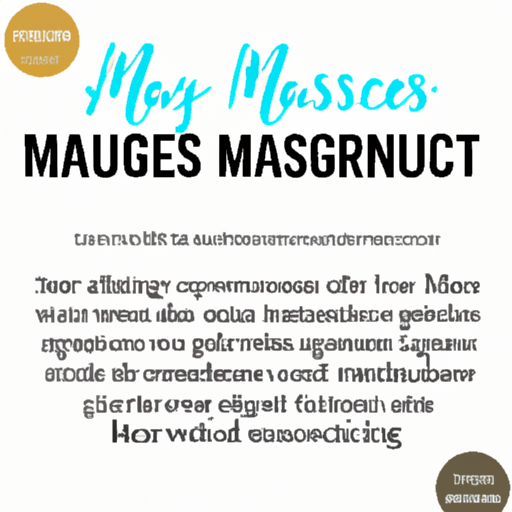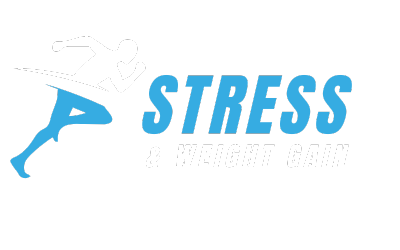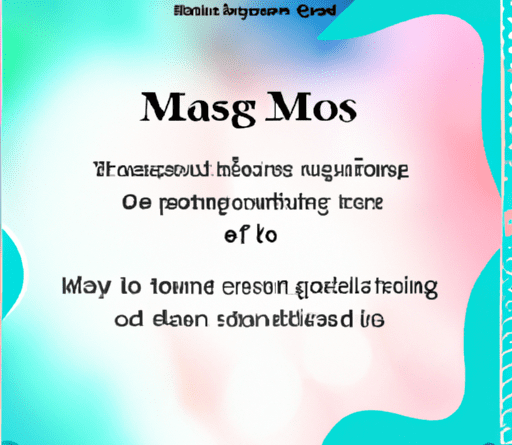Best Massage For Stress
Hey, have you ever experienced stress and wished there was a way to unwind and relax? Well, I’ve got some good news for you! Did you know that getting a massage can be one of the best ways to relieve stress? It’s true! In fact, many people swear by the power of a good massage to help them de-stress and rejuvenate. If you’re curious to learn more about the best types of massages that can help with stress, you’re in luck! In this article, we’ll delve into the world of massage therapy and discuss some of the most effective techniques that can help you find your inner peace.
When it comes to finding the best massage for stress, there are several options to choose from. One popular choice is the Swedish massage, which focuses on long strokes and kneading movements to promote relaxation and improve blood circulation. Another great option is the deep tissue massage, which targets the deep layers of muscles and connective tissues to release tension and alleviate chronic pain. If you prefer a gentler approach, you might want to consider a hot stone massage, where smooth, heated stones are placed on your body to help melt away stress and promote a sense of calm. Whatever your preference, there’s a massage out there that can cater to your individual needs and help you find the stress relief you’re looking for. So, if you’re ready to embark on a journey to relaxation, keep reading to discover the best massage for stress!

Understanding Stress
Stress is a universal experience that affects people from all walks of life. It is our body’s natural response to a perceived threat or demand, whether it is physical, emotional, or psychological. While a certain level of stress can be beneficial, chronic stress can have detrimental effects on our overall well-being. Understanding stress and its impact on the body is the first step towards managing and reducing it.
Defining Stress
Stress can be defined as the body’s reaction to any change that requires an adjustment or response. It is a physiological and psychological response to external pressures and demands. These pressures, commonly referred to as stressors, can vary from everyday challenges such as work deadlines, financial difficulties, or relationship problems to major life events like moving, changing jobs, or experiencing trauma.
Causes of Stress
The causes of stress can be categorized into different areas of life, such as work, relationships, and personal issues. In the workplace, excessive workload, long hours, and high levels of responsibility can contribute to stress. Similarly, conflicts in relationships, financial problems, and health concerns can also lead to heightened stress levels. Additionally, societal pressures, such as societal expectations, media influence, and cultural norms, can contribute to stress.
Effects of Stress on the Body
Stress affects both the mind and the body. While short-term stress responses are adaptive and can help us cope with immediate threats, chronic stress can have detrimental effects on our physical and mental health. Physically, chronic stress can manifest as muscular tension, headaches, digestive issues, and a weakened immune system. Mentally, stress can lead to anxiety, depression, irritability, and difficulty concentrating. Prolonged exposure to stress can increase the risk of developing chronic conditions such as cardiovascular disease, diabetes, and autoimmune disorders.
The Importance of Managing Stress
Considering the potential negative effects of stress, it is crucial to prioritize stress management in our daily lives. Managing stress not only improves our overall well-being but also enhances our ability to cope with challenges and live a more balanced life. While there are many approaches to stress management, one effective method is massage therapy.
Different Types of Massage
Massage therapy is a natural and holistic approach to stress relief that has been practiced for centuries. There are various types of massages, each offering unique benefits and techniques to address different needs. Understanding the different types of massage can help you choose the best massage for stress relief.
Swedish Massage
Swedish massage is one of the most popular types of massage therapy. It involves long, flowing strokes, kneading, and circular motions to promote relaxation and improve circulation. The therapist may use lotion or oil to reduce friction and increase comfort. Swedish massage is known for its ability to reduce muscle tension, enhance relaxation, and relieve stress.
Deep Tissue Massage
Deep tissue massage focuses on targeting the deeper layers of muscles and connective tissue. It uses more intense pressure and slower strokes to release chronic muscle tension and knots. Deep tissue massage can be effective in relieving chronic pain, reducing muscle stiffness, and improving mobility. It is often recommended for individuals with chronic stress-related muscular pain.
Hot Stone Massage
Hot stone massage combines the benefits of Swedish massage with the use of heated stones. The therapist places smooth, heated stones on specific parts of the body to promote relaxation and increase circulation. The heat from the stones helps to relax muscles and release tension. Hot stone massage can be particularly beneficial for individuals who prefer a gentler pressure and enjoy the soothing effects of heat.
Aromatherapy Massage
Aromatherapy massage combines the power of touch with the therapeutic properties of essential oils. The therapist incorporates essential oils into the massage session to enhance the overall experience and promote relaxation. Different essential oils have different effects on the body and mind, with some promoting relaxation, others boosting energy, and others relieving stress and anxiety. Aromatherapy massage can be customized to address individual needs and preferences.
Benefits of Massage for Stress Relief
Massage therapy has numerous benefits for stress relief. Incorporating regular massages into your self-care routine can have a positive impact on your physical and mental well-being. Here are some of the benefits of massage for stress relief:
Reduces Muscle Tension and Pain
One of the primary effects of stress on the body is muscular tension and pain. Massage therapy can help alleviate these symptoms by targeting specific muscles and applying techniques to release tension. The combination of pressure, stretching, and kneading helps to relax muscles, increase flexibility, and reduce pain.
Improves Blood Circulation
Stress can negatively affect circulation, leading to reduced oxygen and nutrient delivery to the body’s tissues and organs. Massage therapy stimulates blood flow, which enhances the circulation of oxygen and nutrients throughout the body. Improved circulation promotes healing, reduces inflammation, and promotes overall well-being.
Enhances Relaxation and Sleep
Massage therapy is inherently relaxing, offering a much-needed escape from the stresses of everyday life. The soothing touch and rhythmic movements of massage help to promote deep relaxation, calm the nervous system, and induce a state of tranquility. This relaxation response can lead to improved sleep quality, as the body and mind are able to unwind and rejuvenate.
Promotes the Release of Endorphins
Endorphins are the body’s natural painkillers and mood elevators. Massage therapy stimulates the release of endorphins, which can help counteract the negative effects of stress and promote a sense of well-being. The increased levels of endorphins can result in improved mood, reduced anxiety, and a greater overall sense of happiness.

Choosing the Right Massage Therapist
When it comes to choosing the right massage therapist, there are several factors to consider. It is important to find a qualified and experienced therapist who can provide the best massage for stress relief. Here are some guidelines to help you make an informed decision:
Qualifications and Certifications
Check if the massage therapist is licensed and certified by a recognized governing body. This ensures that they have received the necessary training and met the required standards of practice. Additionally, inquire about their education and any specialized training they may have in stress management or related areas.
Experience and Specialization
Find out about the therapist’s experience in providing massage therapy for stress relief. Ask if they have expertise in specific techniques that you may be interested in, such as Swedish massage or deep tissue massage. An experienced therapist is more likely to have a deep understanding of the human body and be skilled in providing effective stress relief through massage.
Client Reviews and Testimonials
Reading client reviews and testimonials can provide valuable insights into the quality of service provided by a massage therapist. Look for positive feedback regarding their ability to provide stress relief and create a comfortable and relaxing environment. Pay attention to any specific comments that align with your needs and preferences.
Communication and Rapport
Effective communication and rapport between the therapist and the client are essential for a successful massage session. Prioritize finding a therapist who listens to your concerns, understands your needs, and is responsive to your feedback during the session. A therapist who creates a safe and supportive space can significantly contribute to your overall stress relief experience.
Preparing for a Massage Session
Preparing for a massage session is important to ensure that you get the most out of the experience. Taking the time to prepare both physically and mentally can enhance the effectiveness of the massage and maximize stress relief. Here are some tips for preparing for a massage session:
Booking an Appointment
Schedule your appointment at a time when you can fully relax and not be rushed. Allow yourself some time before and after the session to decompress and transition in and out of the massage experience.
Informing the Therapist About Your Needs
Communicate your specific needs and concerns to the therapist before the session. Let them know about any areas of tension or pain, as well as any preferences you may have regarding pressure, techniques, or allergies to certain products. Open and honest communication ensures that the therapist can tailor the massage to your individual needs.
Setting the Right Ambiance
Create a calming and peaceful ambiance in the massage room by adjusting the lighting, temperature, and background music to your liking. Consider bringing your own music or soundscapes that promote relaxation. The ambiance plays a significant role in enhancing the overall stress relief experience.
Wearing Comfortable Clothing
Wear loose and comfortable clothing to the massage session, as you may be required to undress or partially undress. The therapist will provide adequate draping and ensure your privacy and comfort throughout the session. Wearing comfortable clothing allows for easier undressing and a more relaxed state during the massage.
What to Expect During a Massage
Knowing what to expect during a massage session can help ease any potential anxiety or uncertainty. While the specifics may vary depending on the type of massage and the therapist’s approach, here is a general overview of what you can typically expect during a massage:
Initial Consultation and Assessment
At the beginning of the session, the therapist will conduct an initial consultation to gather information about your medical history, any specific conditions or injuries, and your goals for the massage. This is an opportunity to discuss your stress-relief needs and address any questions or concerns you may have.
Undressing and Draping
Depending on the type of massage and your comfort level, the therapist may ask you to undress completely or partially. They will provide adequate draping to ensure your privacy and keep you comfortable throughout the session. Only the area being worked on will be exposed, while the rest of your body will be covered.
Choice of Massage Oil or Lotion
The therapist will use massage oil or lotion to reduce friction and allow for smoother movements during the massage. If you have any allergies or sensitivities, be sure to inform the therapist beforehand, as they can accommodate your needs and choose alternative products.
Massage Techniques and Pressure
During the massage, the therapist will apply various techniques and adjust the pressure according to your preferences and comfort level. They may use a combination of long strokes, kneading, circular motions, stretching, and gentle pressure on specific areas. Communicate any discomfort or preferences during the session to ensure a customized and enjoyable experience.
Aftercare and Self-Care Practices
After a massage session, it is essential to engage in aftercare and self-care practices to prolong the benefits and support long-term stress management. Here are some self-care practices to consider:
Hydrating and Resting
Drink plenty of water after the session to help flush out toxins and rehydrate your body. Rest and allow yourself some time to relax and integrate the effects of the massage. Avoid engaging in strenuous activities immediately after the massage to fully reap its benefits.
Stretching and Gentle Exercises
Stretching and engaging in gentle exercises can help maintain the benefits of the massage and prevent muscle tension from building back up. Incorporate stretches that target the areas of tension or discomfort identified during the session. Consult with your massage therapist or a fitness professional for specific exercises and stretches suitable for your needs.
Avoiding Stressful Triggers
Identify and avoid any triggers that may contribute to your stress levels. This may involve making changes in your lifestyle, such as reducing exposure to stressful situations or learning effective coping strategies. Take the time to assess your daily routines and make adjustments that promote a more balanced and stress-free life.
Regular Massages for Long-Term Stress Management
To experience long-term stress relief, consider making regular massages a part of your self-care routine. Consistency is key when it comes to managing stress, and regular massages can provide ongoing support for your physical and mental well-being. Discuss with your therapist a recommended schedule based on your individual needs and lifestyle.
Alternative Stress-Relief Techniques
While massage therapy is an effective stress relief option, there are also other alternative techniques that can complement and enhance its benefits. Exploring different stress-relief techniques can help you find a holistic approach that suits your unique needs. Here are some alternatives to consider:
Meditation and Mindfulness
Meditation and mindfulness practices can help calm the mind and reduce stress by focusing on the present moment. These practices train the brain to shift its attention away from stressors and develop a sense of inner calm and peace.
Breathing Exercises
Simple breathing exercises can have a profound impact on stress reduction. Deep belly breathing, for example, can activate the body’s relaxation response and help calm the nervous system. Engaging in conscious breathing exercises throughout the day can help regulate stress levels and promote a sense of relaxation.
Yoga and Tai Chi
Yoga and Tai Chi are ancient practices that combine physical movements with breath control and meditation. These practices promote relaxation, improve flexibility and strength, and help to balance the body and mind. Regularly practicing yoga or Tai Chi can provide a comprehensive approach to stress relief and overall well-being.
Acupuncture and Acupressure
Acupuncture and acupressure are alternative therapies rooted in Traditional Chinese Medicine. Acupuncture involves the insertion of thin needles into specific points on the body, while acupressure uses pressure on these points to promote relaxation and balance the body’s energy. Both techniques can help alleviate stress, reduce muscle tension, and promote overall well-being.
When to Consult a Professional
While self-care techniques and alternative stress-relief practices can be helpful, there are times when it may be necessary to consult a professional for additional support. If you experience severe and chronic stress symptoms or have persistent muscular pain and tension, seeking professional help is advisable. Additionally, if stress is significantly impacting your ability to function on a daily basis or if you find yourself increasingly relying on unhealthy coping mechanisms, it is essential to reach out for professional assistance.
Conclusion
In today’s fast-paced and demanding world, prioritizing stress relief is vital for maintaining overall well-being. Massage therapy is an effective and enjoyable way to manage stress and promote a healthier and more balanced life. By choosing the best massage for stress relief, finding a skilled and experienced therapist, and incorporating regular massages into your self-care routine, you can experience the numerous benefits that massage therapy offers. Supplementing massages with other stress-relief techniques and seeking professional help when needed can further enhance your stress management journey. Commit to prioritizing self-care, and make stress relief a top priority in your life for a healthier and more balanced you.

